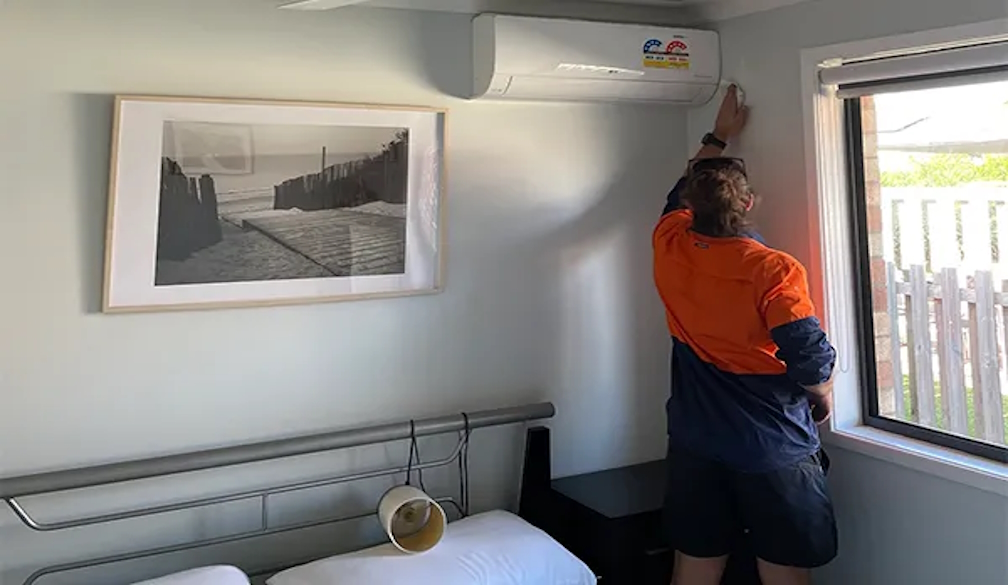Would a mandatory five-day working week solve construction’s work-life balance woes?
- Written by Martin Loosemore, Professor of Construction Management, University of Technology Sydney

Working practices in the construction industry have been labelled a relic of a bygone era – 64% of employees work more than 50 hours per week.
Long working hours can pose significant risks to people’s physical and mental health, relationships, workplace productivity and safety.
Construction is also struggling to attract and retain women. In New South Wales, about one-third of companies with fewer than 200 employees have no female employees at all.
These are serious problems for an industry under pressure to deliver 1.2 million new homes and A$230 billion of infrastructure over the next five years. Clearly, something needs to change.
One proposal is to mandate a five-day week across the sector. On face value, it may seem like common sense. Making the construction sector a more attractive place to work could attract more talent and, by doing so, alleviate other pressures.
Our research questions this assumption, highlighting that without careful design, such a proposal could have significant unintended negative consequences.
Work–life balance
To investigate the potential impacts of a shorter work week on work–life balance, we surveyed 1,475 people and conducted interviews with 111 people from across the NSW building and construction industry. We also examined leading international peer-reviewed studies.
We found that the relationship between a healthy work–life balance and a shorter working week is much more nuanced than the current debate suggests.
There certainly was evidence of unhealthy working hours in some parts of the industry. Of the people we surveyed, 39.8% consistently worked more than five days per week.
We also found 26.1% worked more than 55 hours per week, and 36.7% more than ten hours per day.
But we should be careful not to generalise. Young people, those in relatively junior roles and workers on sites – especially salaried managers and supervisors – were found to be doing the heavy lifting in terms of hours and days worked.
This was especially true on large inner-city commercial, residential and infrastructure projects.
Across all respondents, people worked an average of 50–55 hours per week, and just over five days. More than 60% said they had satisfactory, good or very good work–life balance.
Different needs
We also found that not everyone’s work–life balance will benefit from simply reducing working hours.
For construction workers, this depends on a wide range of factors, such as:
- age
- caring and family responsibilities
- financial circumstances
- how easily a particular job can be done in five days
- personal attitudes towards work.
It’s also not clear whether a shorter working week would increase female participation.
Across men and women surveyed, high salaries were widely regarded as adequate compensation for the high hours worked. Some research has even shown women might be less likely to leave the industry than men.
Our findings suggested women who take on the weight of family responsibilities could be especially disadvantaged, if they were forced to work even longer hours during the week to make up for the lost weekend.
However, most respondents saw the delineation between men and women as increasingly irrelevant and based on outdated assumptions. Most argued that the industry needs to be made more appealing to both men and women.
Strong support for a shorter week
Not surprisingly, we found strong support for a shorter working week. However, it’s a bit of a leading question.
We found that few people were willing or able to take a pay cut, work longer hours or lift their productivity during the week.
Many people were also worried about potential impacts on their projects, employers and colleagues. Few employers and clients said they were able or willing to absorb the costs of a shorter working week.
Impact on projects
Depending on a wide range of factors identified in our report, the consequences of moving the industry to a five-day week varied.
We found it could increase the time it takes to complete projects by 5–25%, and costs by 0.4–4%.
The current “hard five-day week” model being advocated for the industry – where sites are shut down on weekends – involved the greatest potential costs.
Importantly, we found subcontractors were currently underpricing five-day-week projects by as much as 20%, because they could spread the costs across other six-day projects.
If a five-day week were mandated across the entire industry, this cost increase could be added to the costs estimates above.
The jury is out
The jury is still out on the pros and cons of a mandatory five-day week in construction.
We found that a healthy work-life balance for everyone is most effectively achieved by providing people with greater flexibility and control over when, where, how and how long they work.
If flexibility can be improved for everyone in the industry, then there is no need to incur the potential risks of a mandatory five-day week to individuals, employers and clients of the industry.
If we insist on adopting a five-day week, then a soft five-day week where sites are flexibly kept open on weekends may be the better option.
Authors: Martin Loosemore, Professor of Construction Management, University of Technology Sydney


















